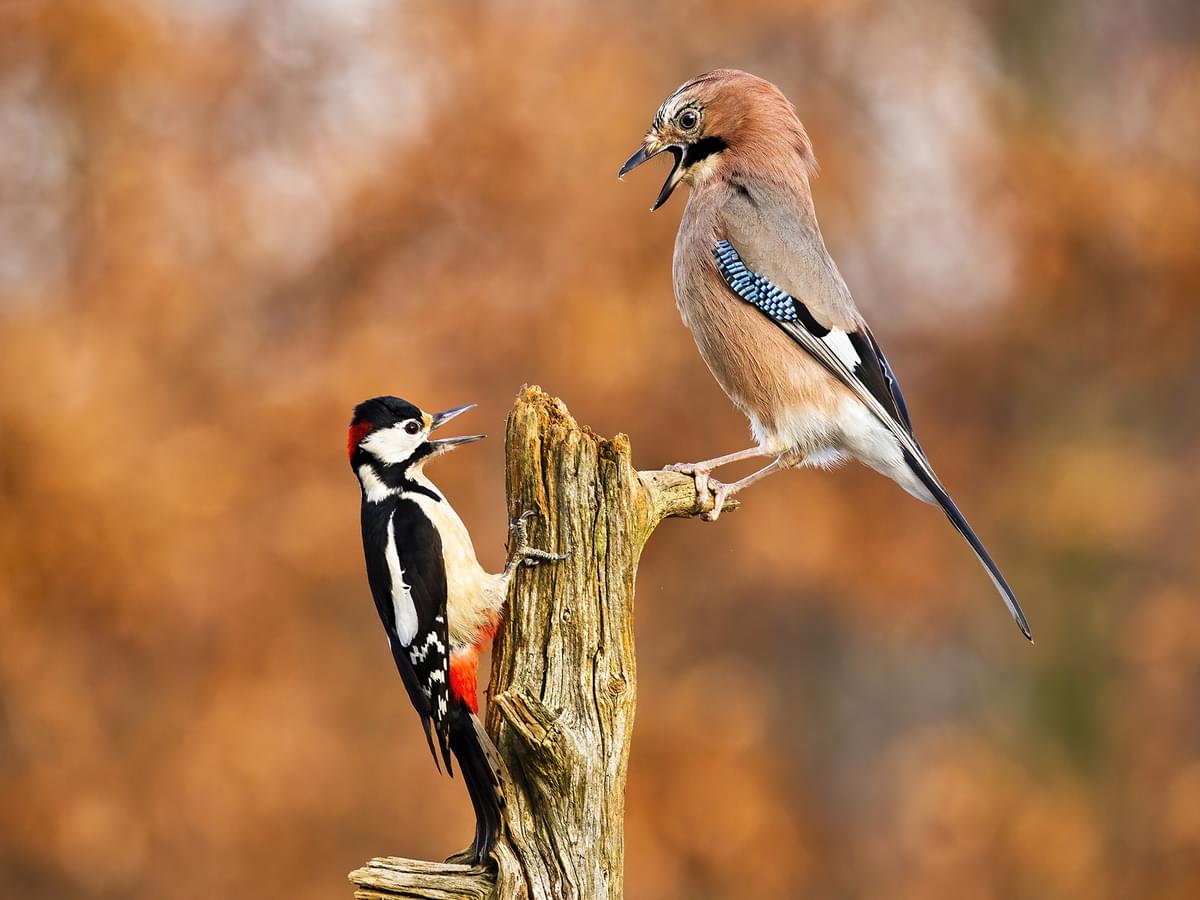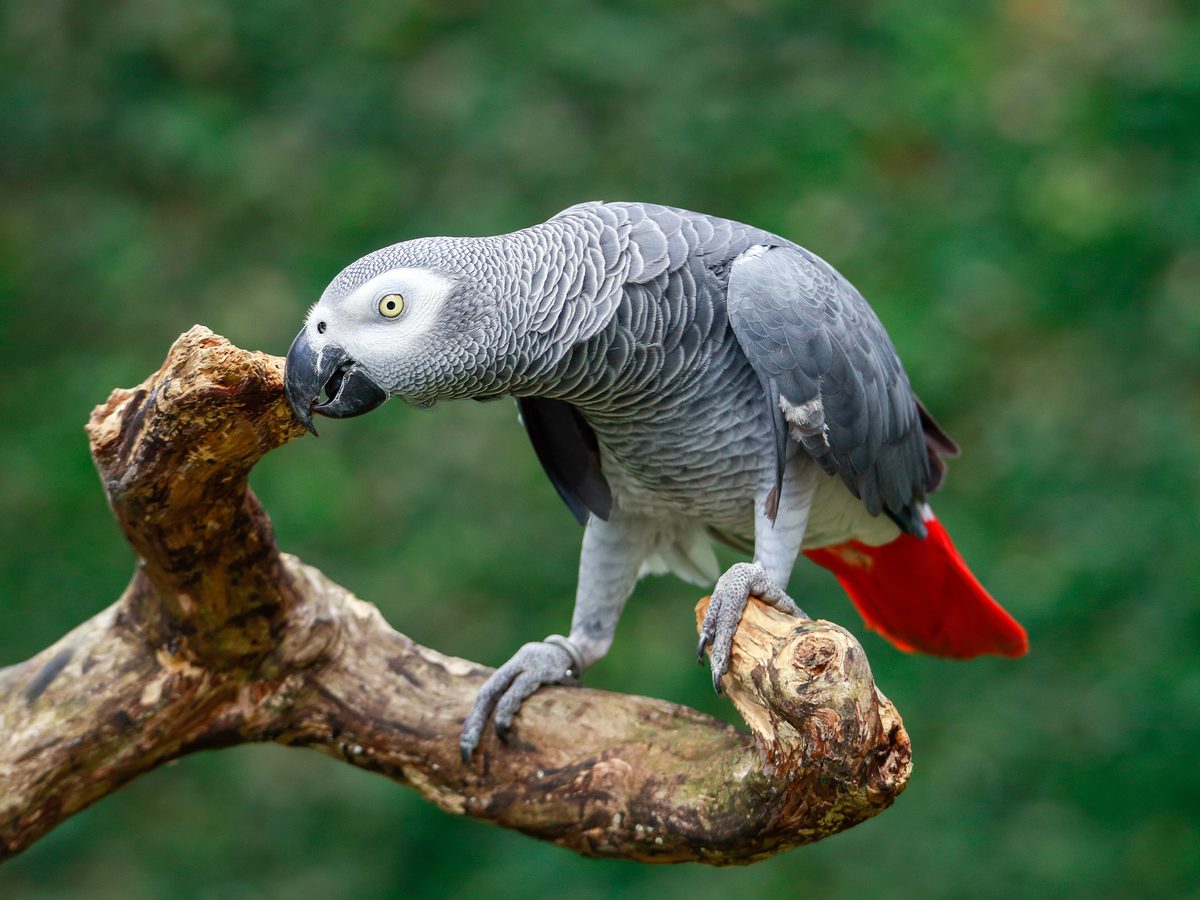Dominance Hierarchies

Pecking orders and power displays can be observed throughout the avian world, from squabbles at backyard feeders to courtship behavior between rival males seeking a mate.
Many factors determine which bird comes out on top, and the concept of dominance hierarchies offers a fascinating insight into the social organization of bird communities.
The Power Dynamics in the Sky
Watch your garden feeders for a short time and you’ll probably notice certain birds always push their way to the front, taking precedence over others feeding nearby.
Within birds of the same species, dominant behavior allows access to the most abundant feeding grounds, best nest sites, and the top choice of females when looking for a mate.
When different species are present, a hierarchy is usually evident, too, with certain smaller birds flying away to make way for a larger, more vocal species.
Dominance hierarchies are commonly centered around competition for resources, including foraging grounds, access to mates, and availability of breeding territories.
Establishing these hierarchies helps to create a sense of social order within a group and minimizes conflict within the flock. Each bird is aware of their own status in the group and interacts accordingly, which leads to improved cohesion and survival chances.

Pictured: A Downy Woodpecker in conflict with a Mockingbird at a garden bird feeder
Understanding Dominance Hierarchies
It’s important to understand both how and why dominance hierarchies form in groups of birds, as it offers us valuable insight into how bird society functions and the roles of individual dominant and subordinate birds within a flock.
To learn more about how certain individual birds rise to ‘dominant bird status’, read on!
What are Dominance Hierarchies?
In the bird world, certain individual birds rank higher in social status than others, guaranteeing better access to food, mates, and nesting sites.
These birds live alongside less dominant individuals, known as subordinate birds, which generally accept their position below the dominant leader and fall into line when selecting mates or feeding.
In bird communities where there are insufficient breeding sites or enough females, subordinate males may be forced to forgo breeding, as the dominant birds take precedence.
One much-studied example of avian dominance hierarchies can be seen in chickens. Studies of peaceful groups of hens explored the theory that all hens are aware of their place in the group’s structure, and when this was obeyed and acknowledged, all was calm.
They knew which birds would dominate them and which they could, in turn, dominate, statuses that were established through fighting over food.
Individual birds that were beaten in fights would remember this experience and not challenge the victor again, falling into a natural pecking order.

One much-studied example of avian dominance hierarchies can be seen in chickens
The Role of Dominance Hierarchies
Dominance hierarchies allow birds to form organized social groups, which leads to improved cohesion and more efficient feeding and breeding than if there was conflict and aggression during every single encounter.
Read on to learn more about how a bird’s place in the pecking order can dictate when and where it feeds and breeds.
Access to Resources
A bird’s place within the dominance hierarchy governs its access to feeding grounds and breeding territories, with those at the top taking precedence over subordinate birds of lower rank. Dominant birds are rewarded with the first pick of mates, the best breeding territories, and the first pick of any food resources.
Crows have a complicated and highly developed social structure, asserting dominance through vocal interactions and body postures.
Males are dominant over females, older birds come above younger ones, and within birds of the same age, physically larger birds are superior to smaller ones.
Dominant birds have access to the best food resources, with individuals further down the pecking order patiently waiting for their turn, according to their own rank.
Conflict Resolution
Where an established pecking order is present in a bird society, day-to-day life is generally peaceful and free from hostile clashes or jostling for position.
By knowing their own place in the dominance hierarchy, no energy is wasted on unnecessary fights or a constant need to try and prove their status.
Dominant behavior asserts a bird’s position in the hierarchy, including display, aggression, and vocalizations.
In peafowl, male peacocks take advantage of their eye-catching tail feathers to impress potential mates and to drive away rival birds, with the most attractive and impressive display generally leading to a position of dominance.
Aggressive posturing is another way that birds can claim dominance, including fluffed feathers, a raised crest, and angled wings. Lunges and swipes toward challenging birds will help to secure their position as top-dog.
Subordinate birds, in contrast, may crouch or withdraw, making themselves appear smaller and hopefully not conspicuous in these encounters.
Vocalizations are another way of claiming dominance, with loud calls or songs serving as a signal of a higher social status within a group.

Pictured: A Gray Catbird. Aggressive posturing is another way that birds can claim dominance, including fluffed feathers, a raised crest, and angled wings
Observing Dominance Hierarchies in Different Species
Male-over-female dominance is most evident in monogamous bird species, where pairs form in the breeding season and remain together for the duration of raising young, or in some cases, beyond.
In polyandrous pairs, where males breed with more than one mate during a season, such hierarchies are less obvious. Keep reading to find out more about the factors that influence dominance.
Species-Specific Hierarchies
In certain species, dominant males stand a better chance of finding a mate than subordinates, and their dominant status gives them improved access to nesting territories and feeding grounds.
Subordinate birds may miss out on the chance to breed in populations where there are insufficient breeding territories or available breeding-age females.
In observations of a large flock of chickens with a clearly established social structure, dominant hens enjoyed increased access to food and avoided being injured in fights with other chickens.
Lower down the pecking order, subordinate birds had to wait until those higher up had eaten their fill, but as their status with the group was clear, they did not have to endure constant fights with other hens and face the likelihood of sustaining more injuries.
Male dominance can be clearly seen in species that display at leks as part of their mating ritual, such as Black Grouse and Capercaillies. In these species, dominant males breed with the most females, thus enjoying a greater chance of successfully producing offspring.
Some species engage in cooperative breeding, where a dominant pair breeds and raises young, assisted and supported by non-breeding ‘helper’ birds, which improves the survival chances of the whole group, as resources are shared, and energy is saved when feeding young or defending a nest.

Pictured: A Western Capercaillie. Male dominance can be clearly seen in species that display at leks as part of their mating ritual, such as Black Grouse and Capercaillies
Factors Influencing Dominance
Two key factors influencing dominance are sex and age. Males are more frequently dominant over females, and older birds dominate younger ones, even if the age difference is not hugely significant.
Interestingly, size was not always shown to be a strong factor in whether an individual bird is dominant or subordinate.
Observations at feeders support this theory, with males noted to come out on top in about 60 percent of hostile encounters with females and females only seen to dominate males in about 40 percent of cases. Older birds were usually observed to be far higher up the pecking order than younger challengers.
After these two factors, experience in conflict was also important, with more experienced birds dominating those with less history of aggressive interactions. Birds born earlier in a breeding season are thought to benefit from being around younger than later-born chicks.

Pictured: A Northern Cardinal Female (left) and Male (right). Males birds are more frequently dominant over females
Implications of Dominance Hierarchies
Impact on Individual Birds
Dominant males enjoy the benefits of claiming a preferential territory and having the first pick of any suitable females when seeking a mate.
Prime access to food resources is another perk of being the dominant bird in a flock. Subordinate birds may crouch or display appeasement postures while in the presence of feistier birds, and will not attempt to feed until the coast is clear.
Dominant birds tend to access safer foraging grounds that leave them less open to predation, which is another potential risk for the less bold birds in a flock.
A similar is true for overnight roosting spots or nest locations. When the best, safest sites have been claimed by those at the top of the power chain, the subordinate birds may face more threats and therefore be less likely to survive.
When there is an imbalance of available mates or a lack of food, subordinate birds may postpone or forgo breeding altogether to allow the dominant pairs to successfully raise their own young with less competition for resources.
It’s not only within the same species that birds encounter a distinct hierarchy, with many smaller species intuitively knowing to back off at bird feeders on the arrival of larger, louder, and more aggressive species.
The arrival of crows or Magpies in a backyard will usually see smaller sparrows and Starlings scattering or retreating to the undergrowth, only emerging when their more intimidating rivals have left.

Pictured: A Magpie. The arrival of crows or magpies in a backyard will usually see smaller sparrows and starlings scattering or retreating to the undergrowth
Conservation Perspectives
Living in a group has benefits in terms of increased vigilance and collective nest defense. However, additional offspring and a growing population may put pressure on food resources, lowering the chances of a successful breeding outcome across the group.
In these cases, it’s understandable that dominant hierarchies have naturally developed, allowing only the strongest birds to breed. It’s clear to see that when only a few pairs within a group are able to reproduce each year, it’s only a matter of time before conservation concerns become apparent, with falling populations a major indicator.
Competitive behavior within bird populations as a pecking order is established has the potential to unsettle individual birds and create threatening and aggressive interactions that can have lasting consequences for the health of a bird.
By offering additional feeding sites, less dominant birds are able to continue to feed without being targeted by their ‘superiors’ who may then realize that there is more than enough to go around.
The same is true for nest boxes. In species that compete for cavities, by mounting extra artificial boxes, competition for nests decreases, offering more pairs the chance to safely raise young without being harassed by more dominant rivals.

Pictured: A Blue Tit. Artificial nest boxes offer more pairs the chance to safely raise their young without being harassed by more dominant rivals
Summary
Dominance hierarchies allow birds to organize themselves into structured societies that can benefit not only the dominant birds but allow the subordinate birds to thrive and avoid conflict and potential injury.
With all birds aware of their place in the pecking order, life can proceed smoothly, without any unnecessary conflict between rivals or excessive competition for food.
Dominant birds claim their position at the top of the pecking order in a variety of ways, based on factors including sex, age, and sometimes size.
Vocal behavior and threatening postures also help to reinforce this status. In some species, such as emperor penguins, leadership regularly rotates between birds, offering all individuals the benefits of being on top of the proverbial tree.

